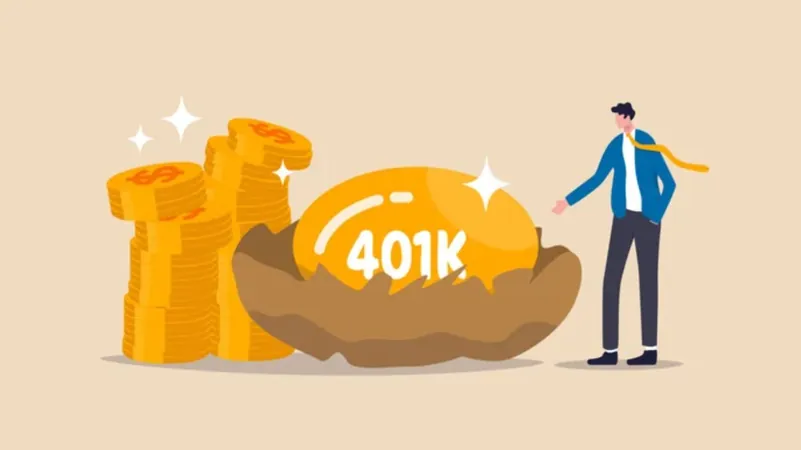
IRS Increases 401(k) Contribution Limits and Introduces Super Catch-Up for Workers Aged 60-63 Starting in 2025!
2024-11-04
Author: Chun
Get ready to supercharge your retirement savings!
Starting in 2025, the IRS has announced an increase in the contribution limits for 401(k) plans, offering Americans the chance to save more for their golden years.
In a recent update, the IRS raised the annual employee deferral limit to $23,500, up from $23,000 in 2024. This increase applies to various workplace retirement plans such as 401(k)s, 403(b)s, governmental 457 plans, and the federal Thrift Savings Plan. Notably, individuals aged 50 and over can continue to contribute an additional $7,500 in catch-up contributions, bringing their total contribution limit to an impressive $31,000 for the year.
A New Opportunity for Older Employees!
But that's not all! Employees aged 60 to 63 will see a significant boost in their catch-up contribution limit. Instead of the standard $7,500, they can contribute an additional $11,250, allowing for increased savings just as they approach retirement age. However, it's essential to note that once individuals turn 64, they will revert to the regular catch-up limit of $7,500.
"While this is a great step for retirement savers, it's important for employees to check their employer's retirement plans. Employers may need to amend their plans to allow for this super catch-up option," advises Richard Pon, a certified public accountant based in San Francisco.
IRA Contribution Limits Remain Steady
For those considering IRAs, the annual contribution limit remains unchanged at $7,000. Catch-up contributions for individuals aged 50 and over will continue to be capped at $1,000.
Additionally, the IRS has adjusted the income phase-out ranges for contributing to traditional and Roth IRAs. For instance, single taxpayers covered by a workplace plan will see their income phase-out range increase to between $79,000 and $89,000, a slight rise from the previous year. Meanwhile, married couples filing jointly will see a new phase-out limit of $126,000 to $146,000.
Is This the Right Strategy for You?
With these changes, it's crucial not to put all your eggs in one basket by solely focusing on 401(k) or IRA contributions. Diversifying your retirement strategy can be a wise move to ensure financial stability in your later years.
What’s Next?
Stay informed and proactive about your retirement planning as these new limits roll out in 2025. Partner with a financial advisor to tailor a savings strategy that suits your lifestyle and future goals. Maximizing these contribution opportunities could be the key to enjoying a comfortable retirement!


 Brasil (PT)
Brasil (PT)
 Canada (EN)
Canada (EN)
 Chile (ES)
Chile (ES)
 España (ES)
España (ES)
 France (FR)
France (FR)
 Hong Kong (EN)
Hong Kong (EN)
 Italia (IT)
Italia (IT)
 日本 (JA)
日本 (JA)
 Magyarország (HU)
Magyarország (HU)
 Norge (NO)
Norge (NO)
 Polska (PL)
Polska (PL)
 Schweiz (DE)
Schweiz (DE)
 Singapore (EN)
Singapore (EN)
 Sverige (SV)
Sverige (SV)
 Suomi (FI)
Suomi (FI)
 Türkiye (TR)
Türkiye (TR)